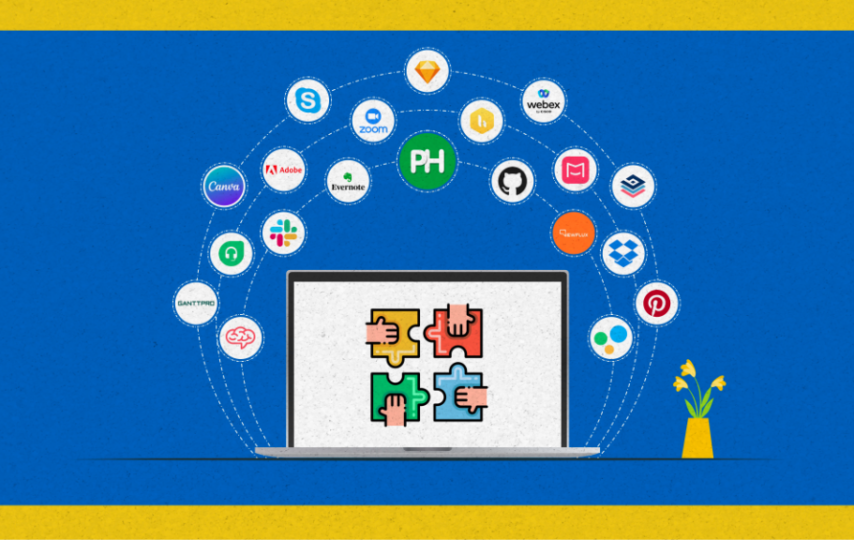Introduction
In the dynamic world of design, collaboration is the key to unlocking innovative ideas and turning them into reality. The ever-evolving landscape of technology has brought forth a plethora of design collaboration tools that foster seamless teamwork among creatives. In this blog, we delve into the realm of “Design Collaboration Tools” and how “AI creative management software” is revolutionizing the way design teams work together, enhancing their productivity, and ultimately empowering creativity.
Understanding the Significance of Design Collaboration Tools
Effective collaboration is the backbone of successful design projects. Gone are the days of traditional methods, where designers worked in silos and communication was often fragmented. Design collaboration tools have emerged as a solution to these challenges, providing a centralized platform for designers to collaborate, communicate, and iterate in real-time.
The Power of Design Collaboration Tools
Real-time Collaboration: Design collaboration tools enable designers to work simultaneously on the same project, encouraging instant feedback and brainstorming sessions. Whether team members are in the same office or spread across the globe, these tools bridge the gap and promote a seamless collaborative experience.
Version Control and Iteration Tracking: Keeping track of design iterations is crucial for maintaining project clarity and organization. Collaboration tools offer version control features that allow designers to review previous iterations, compare changes, and roll back if necessary.
Streamlined Communication: Clear and efficient communication is vital for any design project. These tools often include chat, comment, and annotation features, enabling designers to communicate directly within the platform, reducing reliance on lengthy email threads.
Asset Sharing: Design collaboration tools make asset sharing easy and secure. Designers can upload and access project files, style guides, images, and other resources from a centralized repository, ensuring everyone is on the same page.
Exploring the Best Design Collaboration Tools
Figma
Figma has emerged as a leader in the design collaboration realm, known for its cloud-based platform that allows real-time editing, prototyping, and feedback. Its intuitive interface and powerful design features make it a favorite among design teams of all sizes. Figma’s collaborative features facilitate multiple designers working on the same project simultaneously, ensuring seamless teamwork. Additionally, it allows stakeholders to leave comments and annotations directly on the designs, streamlining the feedback process and promoting efficient communication. Figma’s ability to create responsive designs and prototypes enhances the overall collaborative experience, empowering teams to iterate quickly and effectively.
InVision
InVision is another popular choice, offering a suite of tools for prototyping, collaboration, and workflow management. With its vast library of design templates and seamless integration capabilities, InVision simplifies the design process from ideation to implementation. InVision’s collaboration features allow designers and stakeholders to share and view designs in real-time, promoting effective collaboration and reducing the need for endless email threads. Moreover, InVision’s prototyping capabilities enable designers to create interactive mockups, allowing teams to test and validate their designs with stakeholders and users. This iterative approach streamlines the design process, leading to better outcomes and fostering creativity.
Miro
Miro is a versatile collaboration tool that facilitates brainstorming, mind mapping, and visual collaboration. Its virtual whiteboard and sticky note features make it ideal for design workshops and team brainstorming sessions. Designers can use Miro to create collaborative mood boards, conduct design sprints, and organize ideas in a visual and interactive manner. This promotes creativity and enables teams to explore diverse concepts together. Miro’s real-time collaboration capabilities make it easy for designers to work together, regardless of their physical location, enhancing overall productivity and creativity.
The Rise of AI Creative Management Software
As design collaboration tools continue to evolve, the integration of artificial intelligence (AI) has taken creativity and productivity to new heights. AI creative management software harnesses the power of artificial intelligence to automate mundane tasks, suggest design improvements, and provide valuable insights to designers.
Automating Repetitive Tasks
AI creative management software can automate repetitive design tasks such as resizing images, formatting text, and organizing layers. By taking over these mundane activities, designers can focus on more creative aspects of their work, boosting overall efficiency. This automation not only saves time but also reduces the likelihood of errors, allowing designers to invest their energy in high-value tasks that require human creativity and problem-solving.
Personalized Design Recommendations
Utilizing machine learning algorithms, AI creative management software analyzes user preferences and behavior to offer personalized design recommendations. This helps designers discover new styles and trends, expanding their creative horizons. AI can process vast amounts of data from various sources, including user feedback, market trends, and design history, to present designers with valuable insights that inform their design decisions.
Data-Driven Insights
AI can analyze vast amounts of data and extract valuable insights about design performance and user behavior. Designers can leverage this data to make informed decisions, resulting in more impactful and user-centric designs. AI-driven analytics help design teams identify patterns, understand user preferences, and optimize their designs for better user experiences. This data-driven approach empowers designers to iterate and refine their work based on objective information, ultimately leading to more successful design outcomes.
The Future of Design Collaboration: Where Creativity Meets AI
The future of design collaboration lies in seamless integration with AI. As artificial intelligence continues to advance, we can expect design collaboration tools to become even smarter and more intuitive. From generating design concepts to predicting user interactions, AI will play an integral role in shaping the future of design. As AI becomes more sophisticated, we may witness tools that can assist designers in generating design options based on specific criteria, predicting user preferences, and even automating the prototyping process. These advancements will not replace human creativity but will augment it, enabling designers to focus on higher-level creative thinking and problem-solving.
Moreover, AI-powered collaboration tools can facilitate diverse and inclusive design processes. By analyzing data and user interactions, AI can help identify potential bias in designs, ensuring that products are accessible and relevant to a broader audience. This inclusive approach to design fosters creativity by considering diverse perspectives and experiences, leading to more innovative and meaningful outcomes.
Conclusion
Design collaboration tools have become indispensable in today’s fast-paced design industry. They empower teams to work together effortlessly, fostering creativity and innovation. Additionally, the integration of AI creative management software takes collaboration to a whole new level, automating tasks and providing valuable insights to designers. As we embrace these tools and technologies, the future of design collaboration looks promising, opening doors to endless creative possibilities.
So, equip your team with the best “Design Collaboration Tools” and leverage the power of “AI creative management software” to stay ahead in the creative race. By combining the strengths of collaborative platforms with the intelligence of AI, design teams can amplify their creative potential, deliver exceptional experiences, and make a lasting impact in the world of design. Embrace the future of design collaboration, where creativity meets AI, and unlock the full potential of your team’s creativity. The possibilities are boundless, and the results are extraordinary. Let’s embark on this transformative journey together and shape a more creative, connected, and innovative future.








